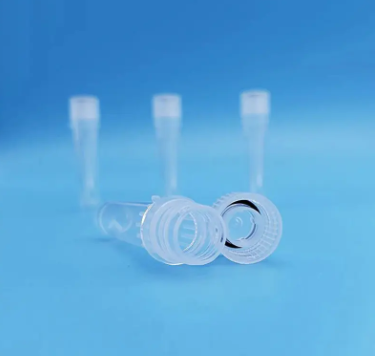In scientific laboratories, especially those involved in biological and medical research, the plastic cryovial tube plays an important role in the storage and preservation of samples. This small cylindrical container may seem simple in design, but its function is crucial to ensuring the stability of samples under extremely low temperatures.
A plastic cryovial tube is generally made from polypropylene or other similar materials, known for their durability and resistance to chemicals. These tubes are designed to store biological materials such as serum, cells, blood, or other fluids. What sets them apart from regular lab containers is their ability to withstand freezing conditions, often as low as -196°C, which is necessary for long-term cryogenic storage.
One of the key reasons why laboratories choose the plastic cryovial tube is its secure sealing. The tube usually comes with a screw cap or snap cap, often including an internal O-ring or silicone gasket to prevent leakage. This airtight seal reduces the risk of contamination and protects the sample during storage and transportation. Some versions are even designed to be pressure-resistant to handle vapor-phase liquid nitrogen environments.
Another notable feature of the plastic cryovial tube is its graduated design. Many models are marked with volume measurements and have writable surfaces for labeling. This ensures that researchers can accurately identify and retrieve samples without confusion. Color-coded caps and barcoded labels are also frequently used for inventory management in larger sample storage facilities.
The size range of the plastic cryovial tube is also an advantage. Most tubes are available in volumes between 0.5 mL and 5.0 mL, allowing researchers to choose the appropriate size for each type of specimen. Some labs prefer smaller tubes for high-throughput screening, while others use larger volumes for longer-term preservation or when a higher sample yield is required.
Sterility is another important factor. A high-quality plastic cryovial tube is sterilized before packaging, usually through gamma radiation or ethylene oxide gas. This ensures the tube does not introduce any unwanted biological agents into the sample. For sensitive experiments, using pre-sterilized tubes can reduce variables and enhance the consistency of results.
In practical use, the plastic cryovial tube is compatible with most standard laboratory equipment, including centrifuges, freezers, and cryogenic storage racks. This versatility makes it easier for laboratories to integrate these tubes into their existing workflow without requiring custom holders or adapters.
Cost-efficiency also matters. While the price of a plastic cryovial tube may vary based on size, material, and features, it is generally considered a reusable or single-use item depending on lab protocols. Labs often order these tubes in bulk to support daily storage needs, especially in research centers handling large numbers of clinical or biological specimens.
Environmental safety is gradually gaining more attention in scientific communities. Many manufacturers now offer plastic cryovial tubes that are BPA-free and comply with international regulations for medical-grade plastics. This ensures both user safety and compliance with institutional standards.
The plastic cryovial tube is a trusted tool in biological sample storage, valued for its durability, compatibility, and security. Whether in clinical diagnostics, genetic research, or pharmaceutical testing, it remains a fundamental part of controlled and cryogenic environments.
https://www.pipettetipfactory.com/product/plastic-cryovial-tube/
